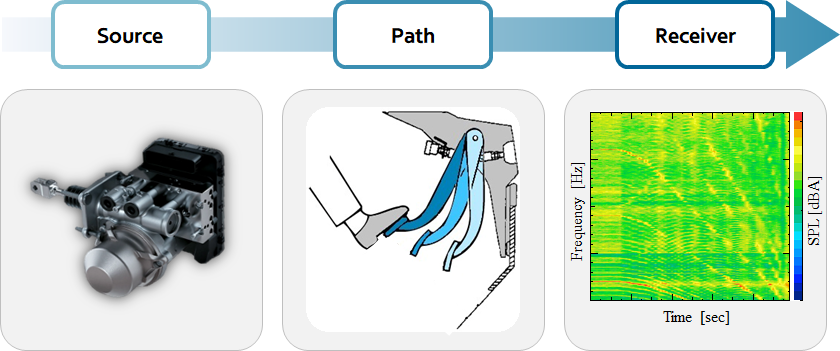NVH Analysis of Electric Brake System
The purpose of research
Currently, the technology development trends of automobile companies around the world are changing significantly. In line with the eco-friendly era, a change is taking place throughout the automobile market from the development of vehicles with internal combustion engines to the development of motor-based electric vehicles. However, as the electric motor was replaced, large and small NVH problems that were not recognized as vibration and noise of the internal combustion engine began to appear. Electrification is applied not only to the driving system but also to various parts systems such as the braking system and the steering system, and the problems mentioned above are largely appearing. Despite these disadvantages, because of the electrification of the brake system, the electronic brake system has advantages of weight reduction, ease of control, and high braking efficiency compared to conventional hydraulic brake systems. It is very important to understand the symptoms of NVH problems.
The procedure of NVH analysis
Vibration of the drive unit generated during braking stimulates the brake system and generates noise, which is directly transmitted to the driver through structural coupling. The noise and vibration generated at this time deteriorate the driver's riding comfort. The research process to analyze this efficiently proceeds in the order of Source-Path-Receiver as follows. The selection of the analysis frequency band is accomplished by identifying the excitation source of the driven device. Through this, it is possible to avoid system resonance by changing the dynamic characteristics of parts that deteriorate NVH performance, and to identify the causes of noise and vibration.

